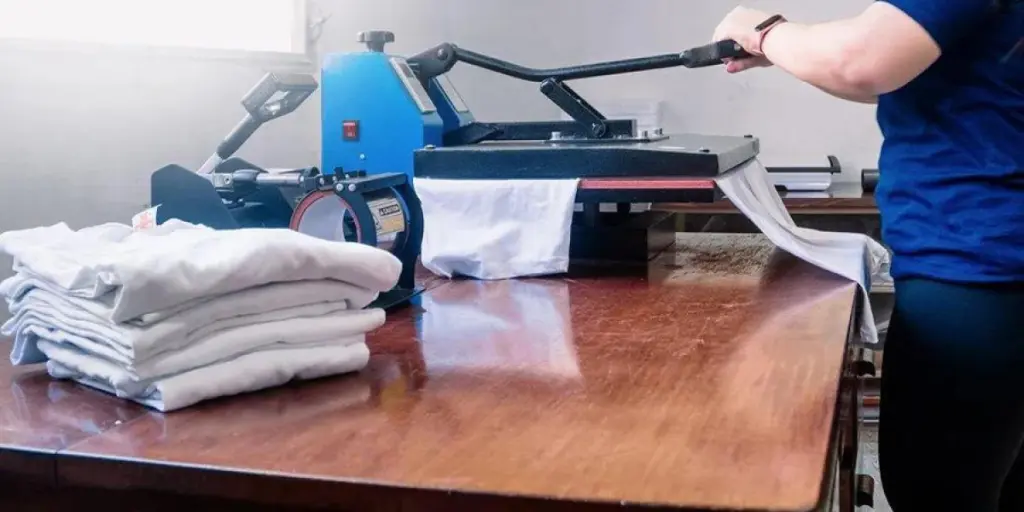Sublimation is one of the most common methods used for printing. Although this printing technology has been around since the ‘50s, sublimation has seen a resurgence in popularity thanks to the development of more powerful and affordable printers.
If you’re thinking about starting a printing business, sublimation is one of the easiest and most cost-efficient ways to do it. But what makes sublimation so attractive for small printing businesses? Read to the end of this article to find out.
What is sublimation?
Sublimation printing is akin to heat transfer printing. Both processes require you to print a design onto a piece of paper, and then transfer the design from the paper to the material through heat transfer.
However, what largely sets sublimation apart from heat transfer is the ink that is used. The ink used in sublimation printers starts in a solid state. When you press the paper on which the design is printed onto the material, the ink on the paper is converted into gas through heat. Then, when the ink on the printer is transferred or “sublimed” into the material, the ink resorts back to a solid state, becoming a permanent part of the material.
This process results in a seamless print that, unlike heat transfer, does not create an additional layer on the surface of the material. This creates a printed surface that is hardly noticeable and smooth to the touch.
What makes sublimation superior
Sublimation printing has many benefits over other types of garment printing, such as:
- Creative freedom. You can use software to create virtually any design you want, and print your design on most surfaces. This gives you full creative freedom over any type of project you want to take on.
- Lasting design. Because of the way the ink is permanently transferred to fabric, the printed design lasts a long time. It will not crack, peel, or fade even after many years of wash and wear.
- Whole garment printing. Sublimation printing makes it possible to print over an entire garment from top to bottom. This allows you to design clothes exactly how you want them to be.
- No compromise to comfort. Unlike heat transfer or other types of printing such as Direct to Film (DTF) or Direct to Garment (DTG), the print transferred through sublimation does not create a rubbery texture. This ensures that the comfort of the garment is not compromised.
- Photographic quality. High-resolution printing is possible, allowing you to print hyper-realistic designs with superior image quality.
- High demand. There is a high demand for sublimation printed garments, from sports jerseys to made-to-order T-shirts.
Investing in sublimation equipment
The biggest expense of starting a sublimation printing business is equipment. You will need at least a printing machine and a specific type of ink for sublimation printing.
To start your business right, you will need to invest in the following products:
- Printer. There are no requirements on the type of printer. Any printer will do. However, if you want excellent prints, you will need a good-quality printer that can produce prints of photographic image quality. Ideally, you also want the printer to be durable enough to withstand at least a few years of use.
- Heat press. The second major piece of equipment you need to invest in is a heat press. While an iron will do for small projects, a heat press is essential to achieve high-quality prints consistently.
If you want your business to focus on something other than garments, such as ceramic coffee mugs or water bottles, you will need to invest in a different version of a heat press, such as a mug press or a mug oven.
- Sublimation ink. There are a few types of sublimation ink that will work with most printers. However, not all inks are created equal. When getting sublimation ink, you need to consider things such as compatibility with your printer, color quality, fading, clogging, and ICC profile. It is recommended that you read online reviews from customers before you make a purchase.
- Printheads. A printhead is a component inside a printer that houses ink cartridges. Be careful not to go too cheap on printheads, as some of them can quickly become clogged with ink.
- Sublimation paper. Sublimation paper is a special type of printing paper that can absorb and retain sublimation ink. When press-heated on a blank surface such as a T-shirt, sublimation paper releases ink onto the surface.
- Blank garments. Sublimation printing works best on 100% polyester or polyester blend garments. It is also possible to sublimate over cotton by using specialty paper that is specifically designed for this purpose.
Is sublimation printing more affordable than other printing methods?
Yes. Starting a business with sublimation printing requires lower upfront and running costs than other printing methods. The biggest factor that contributes to this is, as mentioned above, that you will not need to buy a specific type of printer to get your business up and running. If you decide to upgrade to a new printer, there are many affordable enterprise-grade printers specifically designed for sublimation to choose from.
In addition, polyester garments, the preferred material for sublimation, typically cost less than cotton garments. This allows you to save more on resources than DTG printing, which works best with cotton.
Source from Kingjetprinter




